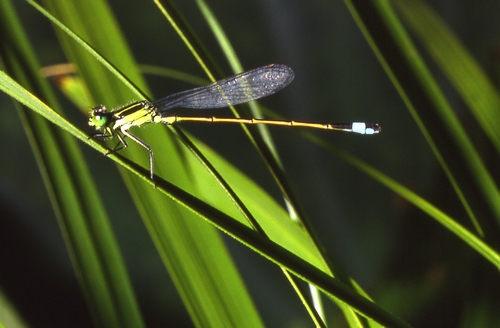Insects: Introduced Species
Scientific name: Ischnura ramburii
Common name(s): Rambur's forktail

Status: Introduced
Habitat:Ponds, wetlands, slow-water area of streams
Preferred Area of Stream: Larvae found in thick vegetation on the sides of pools and in wetland habitats and kalo lo‘i
Range in Hawai‘i: Common on all Hawaiian Islands
Diet: A wide range of aquatic insects, small aquatic crustaceans such as amphipods, mosquitoes and moths
Predators: Native and introduced fish, dragonflies, introduced crayfish, birds
Fact: Rambur’s forktail females will lay their eggs on floating algae mats and other aquatic vegetation. In the presence of introduced fish Rambur’s forktail larvae exhibit different behaviors that make them more susceptible to predation than that of the native Megalagrion damselfly larvae. Native damselflies will swim to the surface, likely to avoid native bottom-dwelling fish while the introduced damselfly larvae will slowly swim to the bottom and to the nearest piece of vegetation to hide from the fish. Rambur’s forktail damselflies are larger than the introduced Fragile Forktail damselfly but the distinctive blue coloration on the tip of the male abdomen is a clear give-away this species is introduced because no native species has this type of coloration. However, female Rambur’s forktail may be confused with some native damselfly species as the orange females are often mistaken for the much rarer native Hawaiian damselflies. |

